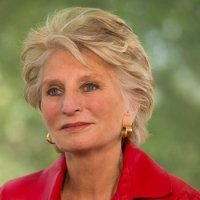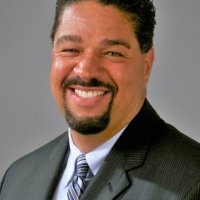Public-Private Partnerships in Aid: A Tool For U.S. Policy
USAID funding is “far outstripped” by private investment and business relationships in “nearly every country” in which it works – and that’s a good thing, according to USAID Administrator Rajiv Shah.
“We have now learned and seen that the world is different than it used to be a few decades ago,” said Shah at the Wilson Center on February 14. Energy, investment, and resources used to be “largely defined by public resource flows,” like those provided by USAID, but “today, we are a small fraction of that,” he told the overflow audience at a “National Conversation” event moderated by NPR’s Global Health and Development Correspondent Jason Beaubien.
This “new model of development,” as Shah put it, “requires us to do things differently – to be more nimble and more flexible, to reach out to private sector partners at home and abroad, and to bring more engagement to tackle the kinds of problems we want to solve.”
This kind of investment is often in the private sector’s interest, said U.S. Representative Earl Blumenauer (Oregon). “If Coke has a keen interest in sustainable supply of water around the globe, the extent to which they’re able to partner with USAID, other NGOs, it helps meet this objective…it also helps them deal with market, because if they are identified as a part of the solution as opposed to part of the problem, people who are making their own economic choices will gravitate towards them.”
From Seeds to Contraceptives
USAID has expanded its partnerships with U.S. corporations to improve food security and agricultural productivity in developing countries. “We’re working with Wal-Mart in a dozen countries around the world to help reach hundreds of thousands of small-scale farmers, providing technical assistance and support but also connecting them to a real market…that is going to be there for the long haul and sustain their gains,” Shah said.
In Ethiopia, where it is estimated hunger robs the economy of billions of dollars every year, USAID is working with DuPont, the Ethiopian government, and farmers to bring hybrid maize to 35,000 farmers, with a long-term goal of reaching three million. “The most important part of that, of course, has nothing to do with DuPont,” said Shah:
It’s all about what’s going on at the farm-household level. These are farmers who…often have a two-to-three month period during the year that everyone refers to as the ‘hungry season,’ when kids and mothers and fathers go without food or adequate nutrition. The bottom line is, for these 35,000 households, they’ve now beaten that. …This is the path to end widespread hunger without giving out food but rather relying on the industry and enterprise of small businessmen and women.
Beaubien asked Shah if he thinks there’s any area of international development where the private sector “just shouldn’t be involved.” Shah’s response was simple: “No.”
He highlighted examples in maternal and child health, including USAID’s partnership with Johnson & Johnson. The Mobile Alliance for Maternal Action provides new and expectant mothers vital health information via mobile phone in developing countries such as South Africa, Bangladesh, and India. And GE is helping to bring power to hundreds of health clinics throughout East Africa, with the aim, Shah said, of putting a dent in high rates of preventable child mortality (globally, an estimated 6.6 million kids die before reaching the age of five).
“It’s important to keep it all in perspective and not see it as a rationale to do less but an opportunity to do more.”
Another example is Family Planning 2020, an initiative that aims to provide voluntary access to contraceptives to least 120 million more women and girls around the world by 2020. Announced at the 2012 London Summit on Family Planning, the partnership involves governments, civil society, donors (including USAID), and corporations. “This is a partnership…to really work collaboratively to meet an urgent and key development priority right now,” said ECSP’s Roger-Mark De Souza. “It’s not only about U.S. corporate interest but global interests, and there’s a shift in that partnership model that’s more global and inclusive, and bringing both governments and local corporations.” According to the Bill and Melinda Gates Foundation, one of the sponsors, an estimated 80 million women had unintended pregnancies in 2012 and at least one in four resorted to unsafe abortion.
An Opportunity to Do More
“Opportunities to do this are endless,” Shah said. Still, the success of private aid to developing countries should not discount the necessity of the “critical complementary commitments” of public aid or nonprofits organizations, he said. “It’s important to keep it all in perspective and not see it as a rationale to do less but an opportunity to do more.”
“One of the most innovative and exciting things about this analysis that we bring to the table is we bring the models and the analysis that the corporate sector ordinarily could not find on its own,” De Souza said of the Wilson Center. “There are areas where typically the corporate sector and a corporate private partnership would miss, but that’s where you have a think tank or the nonprofit sector coming in to bridge that role.”
Ultimately, the panelists agreed, the combined power of both sectors is what can make the greatest impact. “What’s going to save the world is where we align these interests, so that the billions of decisions that are made every day have the right environmental, economic, humanitarian interests…so that people do things that will make a difference,” said Blumenauer. “What I think is being described here is a way to align those individual decisions, whether they’re government programs or private sector decisions…that’s what’s going to be transformational.”
Speakers


Vice President, Sustainable Markets, Pact
Hosted By

Environmental Change and Security Program
The Environmental Change and Security Program (ECSP) explores the connections between environmental change, health, and population dynamics and their links to conflict, human insecurity, and foreign policy. Read more


Maternal Health Initiative
Housed within the Wilson Center's Environmental Change and Security Program, the Maternal Health Initiative (MHI) leads the Wilson Center’s work on maternal health, global health equity, and gender equality. Read more
